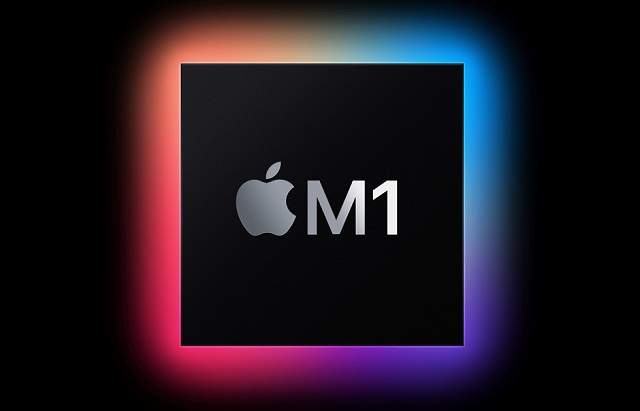GoFetch lets Apple M-series processors perform more quickly. But there is a drawback to this feature. It is that the feature leaves the processors vulnerable to a new side-channel attack. So, hackers are able to extract the secret encryption keys, resulting in accessing all the vital information.
This side-channel attack exploits DMPs or data memory-dependent prefetchers, allowing hackers to steal sensitive data. DMP is one of the features belonging to modern processors. Its function is to predict which data is beneficial by using memory access patterns. Then, it preloads the data into cache memory in order to get quick access. This vulnerability can affect the M series of chips of Apple and allow attackers to steal sensitive information from Mac under a few specific conditions.
What is the GoFetch Vulnerability?
GoFetch refers to a cache side-channel vulnerability. Its function is first to analyze side data and then targets a specific cache from the system. Apple’s M-series chip possesses a DMP. This Prefetcher is actually the chip’s hardware part used to predict the memory address of any data that code run on the computer is possible to access in the near future and store it in a cache.
Boru Chen, David Kohlbrenner, Yingchen Wang, Riccardo Paccagnella, Pradyumna Shome, Christopher W. Fletcher, and Daniel Genkin wrote in a publication that DMPs store the memory address pattern and data memory contents in order to determine the thing required to prefetch, unlike the classical ones which are capable of storing only the memory access pattern.
This publication revealed all the information about the GoFetch vulnerability. In detail, it can be said that the vulnerability is able to affect the M1, M2 and M3 chips of Apple. It allows the attackers to extract the keys from cryptographic apps on a specific system. Hence, attackers need to run a fraudulent process on that CPU cluster of the device to succeed in the exploit. The vulnerability will reside in the hardware. Therefore, you do not see any mitigation now for it.
How is GoFetch Vulnerability Created?
The behaviour of DMP creates the problem of GoFetch vulnerability. The issue is that the DMP gets confused between the memory content and the pointer value. You should know that the function of a pointer value is to load other data. Some researchers said when attackers craft chosen inputs, they can exploit the vulnerability. Attackers can see the pointer-like values only once they guess a few secret key bits right. When they repeat the same process on different bits, they could be able to guess every bit of a secret key.
Researchers performed some tests which showed that attackers could extract the secret keys from popular encryption products, including Go RSA decryption and OpenSSL Diffie-Hellman Key Exchange. Additionally, the keys can be extracted from post-quantum cryptography, including CRYSTALS-Kyber and CRYSTALS-Dilithium. Researchers wrote that they tried to demonstrate the attacks which are end-to-end on four cryptographic implementations. However, the risk becomes higher for some programs.
What is a Cache Side-channel Vulnerability?
Suppose you have a locked safe, but you do not know the password or code. However, you know the sound made by the dial when you change the numbers. Therefore, it is essential to carefully listen to the sound of the dial when you turn this. In this way, you get to know what the combination of the code is though you are unaware of the actual numbers.
The working process of a side-channel attack is the same. Hence, attackers do not try to break the encryption directly. Rather than that, they search for clues which can assist them by revealing the secret information. For instance, they could use a device which can measure the power that a computer uses. The reason is that it can perform encryption operations.
Once attackers analyze the patterns used in the power usage, they will be capable of finding the used key for encryption. In such cases, although attackers are not aware of the algorithm; they use this kind of technique as it is very effective. In addition, it can help to bypass the security measures. Thus, they are able to access vital data.
What are the Mandatory Conditions for Successful Exploitation of the GoFetch Vulnerability?
Attackers have to run code with the logged-in user privileges to exploit the vulnerability. It indicates that the computer which has been targeted has been compromised already. After that, they need to execute the exploiting code as a process that runs on the exact CPU cluster from that particular device.
What Did Fred Raynal Say?
He is the chief executive officer of Quarkslab, which is a French company for offensive and defensive security. Fred Raynal said that the processors can become vulnerable because these conditions are possible, as Malware attacks prove this regularly.
Additionally, Raynal said that a process on OS X is unable to debug another process’s memory for the same user. However, there is a pop-up window. But you do not see any pop-up for this GoFetch vulnerability attack. It will be totally invisible without extra privileges that are essential for accessing data between two processes.
What Systems Are Vulnerable To GoFetch?

A similar DMP is available on the latest 13th-generation (Raptor Lake) architecture of Intel. Hence, the activation criteria are more restrictive, which makes this robust to the vulnerability. Like the M3 chip, the Raptor Lake processors use the Data Operand Independent Timing bit to disable DMP.
GoFetch Threat Mitigation:
If you disable the prefetcher, it could incur heavy performance penalties. As per researchers, it is impossible on M1 and M2 CPUs. Hence, techniques like cryptographic blinding can be applied. However, a drawback of this approach is that it needs potentially DMP-bespoke code changes for each cryptographic implementation, along with heavy performance penalties for a few cryptographic schemes.
You can run all cryptographic code on Icestorm cores. The reason is that DMP is not activating those. Such a solution is going to reduce performance. But a risk is there that DMP can be enabled silently on the cores later.
In this case, the long-term solution is hardware support. Researchers said to broaden the hardware-software contract for DMP to resolve the problem. Hardware should at least expose software for disabling DMP at the time of running apps that are vital for security. For instance, DOIT extensions of Intel always mention disabling their DMPs via an ISA extension.
-
Protections That Can Be Taken:
Forbidding a remote code execution on the targeted computer is the most effective protection currently. It prevents attackers from exploiting GoFetch. That’s why it is recommended to keep hardware always updated along with the software and systems. Thus, you can reduce the risk of an attacker or malware. So, you must not install any software which originates from any unreliable third parties. It is essential to be careful about phishing emails because these might have malicious code.
The Bottom Line:
In short words, GoFetch demonstrates that although a victim follows the constant-time paradigm and separates data from addresses mistakenly, DMP will create secret-dependent memory access on behalf of that particular person. Thus, DMP makes a victim suspect of such attacks. Attackers influenced the prefetched data by weaponizing the prefetcher. In this way, it creates a chance to access
crucial information. As per the vulnerability, the prefetcher has more aggression now than previously thought and creates a significant security risk.
The flaw’s basic nature indicates that it is impossible to be fixed in the existing Apple CPUs. Therefore, developers of cryptographic libraries need to do something in order to prevent the vulnerability from stealing sensitive information. Although on Apple M3 chips, enabling DIT helps to disable DMP, it will not be possible on M1 and M2 processors.







